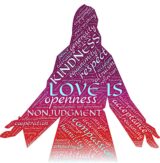The Library of Life
"You are from below; I am from above. You belong to this world. I do not" (jesus, John 8:23)
guidelines for use
- Create Your Personal Sacred Space: Designate a location where you can retreat without disturbance.
- Establish a Personal Sacred Ritual: Consider lighting a candle, burning incense, or playing soft music to enhance your practice.
- Embrace Openness: Allow your mind, rather than your ego, to shape your inner experiences.
- Trust the Process: Respect your personal pace of growth and development.
- Keep a Daily Journal: Document your insights and experiences to track your journey.
- Set Your Intention: Begin each session by clarifying what you hope to achieve that day.
This site is designed for every true seeker, from beginners striving for “Awakening” to advanced practitioners of Spiritual Truths. Here are some best practice guidelines you can easily follow:
understanding one
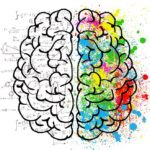
Think of your brain as a super quantum computer with millions of powerful apps designed to process information and adapt to life’s circumstances. Some of these apps are highly active and easily recognizable, while others remain passive or dormant, waiting for a nudge from your intention to awaken.
Awakening your Spiritual essence involves shifting awareness from the dominant verbal, analytical, and logical functions of the left hemisphere to the non-verbal, visual-spatial, and emotional intelligence of the right hemisphere. Each hemisphere offers a unique way of knowing the world.
Two key talents of the right hemisphere are thinking in metaphors and perceiving patterns within the whole picture. This website engages the intellectual sensibilities of the left hemisphere first. Then, through guided meditations available on my YouTube channel, you’ll experience these insights through imagery and metaphor.
understanding two

In the following paragraph, I outline several fundamental assumptions about life and personal growth. These principles serve as universal building blocks:
Whether happy or sad, fulfilled or empty, loved or unloved, you create and manifest your personal reality. Your life, in essence, reflects your attitude toward living it, and some attitudes are far more beneficial than others.
We are naturally drawn toward physical, mental, emotional, and spiritual equilibrium and balance.The primary directive seems to be learning to manifest your highest and greatest good in Body-Mind-Spirit.
You do not have a soul; rather, you are your soul. You are not a physical being seeking a spiritual experience but a spiritual being having a physical reality.
Throughout my church upbringing and academic training, no one ever defined the soul for me. When my spiritual awakening began, I felt a strong need to understand and define the concept of the soul. Stuck and searching for answers, I found that my scientific training and graduate education had not addressed this fundamental question: “What is the soul?” In my quest, I consulted a dictionary and discovered a profound definition:
Soul: 1. An entity regarded as the immortal or spiritual part of a person, credited with the functions of thinking and willing, and hence determining all behavior;
2.The spirit of a dead person, thought of as separate from the body and leading an existence of its own.
Reflecting deeply on this definition leads to a powerful realization: we do not have a soul; we are our soul.
understanding three
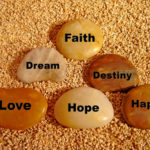
It is useful to think of human behavior in the following way: within each of us, metaphorically speaking, are two cups. These two cups represent all of our needs.
ALL OF OUR BEHAVIOR, EACH AND EVERY DAY, IS ON SOME LEVEL, DIRECTED TOWARD THE FILLING OF OUR INNER CUPS.
So just picture yourself with two cups. One cup is the “Safety Cup” and the other is the “Significance Cup.” The Safety Cup is the first to be filled each day. For your safety to be full you must be/feel free from any threat to your well-being and to know that your physical needs of food, clothing, and shelter are met. However, in today’s environment, many people are worried, anxious and afraid that these basic needs will go unmet. Then WHAT?
Once the Safety Cup is adequately filled, then you can focus on the cup of significance. Some of the significance needs are the following:
- the need to feel special and important
- the need to feel loved, accepted, and approved of
- the need to be creative
- the need to feel you are becoming you who you are meant to be
- the need for self-actualization
the sentinel
Let us now take a deeper dive into each of these transformative steps, exploring their meaning, their power, and their role in your personal evolution.
Now, imagine that on top of your head sits a radar dish about the size of your hand. I call this radar dish “The Sentinel.” The role of The Sentinel is to continuously scan your environment, much like radar, assessing the degree of danger or threat to your well-being. It is deeply connected to your basic survival instincts and never stops operating. The primary purpose of The Sentinel is to activate your fight-or-flight stress response when necessary.
This function is essential. As we learn to navigate the world, The Sentinel operates close to the top of our head, calmly monitoring our surroundings. When we experience something that causes pain—whether physical or emotional—The Sentinel becomes more alert. If we endure a significant trauma, The Sentinel can become hyperactive, constantly scanning for threats.
To illustrate this, place your hand flat on the top of your head. This represents a relaxed and calm Sentinel, signaling that all is well and no immediate danger is present. Now, extend your arm and hand as high as you can reach. This represents a hyper-vigilant Sentinel, constantly on high alert, which creates a chronic state of tension in the body and anxiety in the mind. A hyper-vigilant person is perpetually bracing for the next bad thing to happen.
This heightened state is not sustainable. For a hyper-vigilant Sentinel, even the mere thought or perception of a threat can trigger the fight-or-flight response. Living in this state is incredibly taxing, both physically and emotionally.
Abuse, trauma, and loss are among the greatest causes of hyper-vigilance. When compounded over time, these experiences can lead to Post-Traumatic Stress Disorder (PTSD). But this isn’t limited to individuals. Families, communities, and even entire civilizations can suffer from what I call “Spiritual PTSD”—a collective trauma carried across generations that shapes our unconscious responses to the world.
Understanding The Sentinel is a critical step toward healing. By recognizing its role and calming its hyper-vigilance, we can begin to release the trauma that binds us and move toward a state of peace and spiritual clarity.
the protector
The Protector. Now place your other hand on your head. This hand represents The Sentinel’s twin sibling, The Protector. More specifically, when one feels threatened, the most important thing becomes to feel safe and comfortable once again. This is the task of The Protector. For many people, much of their unconscious motivation is to always feel safe, secure, and protected.
In my work as a psychotherapist and healer I have learned through experience that patterns PTSD are passed down from lifetime to lifetime (Genetic Memory, Reincarnation). For the hyper-vigilant person, waiting for the next bad thing to happen becomes part of their worldview. More specifically, one must be on guard at all times, one feels continually suspicious, anxious, and untrusting. Depression, anxiety disorder, eating disorders, and addictions are common coping mechanisms for hyper-vigilance. Subsequently, in order to fill the Safety Cup, one must teach The Sentinel how to relax. The Sentinel serves a very useful purpose but when it becomes hyper it becomes harmful.
genuine control
Genuine Control. The first step toward inner peace is for The Sentinel and Protector to remember how to relax, to feel safe, and to become centered. Once this process is in place, attention can turn to the Cup of Significance. I suggest that internalizing the concept of Genuine Control is the way in which to make this change. Control is always an issue as is predictability.
Research has revealed that when one feels out of control and when circumstance and situations lack predictability, one becomes stressed out and the Sentinel becomes hyperactive. Genuine control is learning to live in the present moment. Being in the present moment requires letting go of old ways of thinking, feeling, and doing (especially those we that have been lived since childhood). In the present moment, you can tune into the inner guidance offered by your feelings, emotions, and spirit.
- In the present moment, you allow yourself to become aware of your options and choices.
- In the present moment, you are calm, centered, and focused.
Learning to live in the present moment and to be in genuine control requires letting go of fear.
In the following paragraphs, I outline several fundamental assumptions about life and personal growth. These principles serve as universal building blocks:
You create your reality by filling your Cups of Safety and Significance. You also understand that worry, anxiety, and fear stem from the perception that these Cups will not be filled.
Before we begin the Seven Steps, it’s important to know that becoming awake is not merely waking from slumber; it involves shifting your perception from the verbal, analytical, black-and-white processing of the left hemisphere to the nonverbal, visual-spatial, and creative capacities of the right hemisphere.
meeting our needs
Among the most powerful and beautiful words spoken by Jesus are:
- 25 “Therefore I tell you, do not be anxious about your life, what you will eat or what you will drink, nor about your body, what you will put on. Is not life more than food, and the body more than clothing?
- 26 Look at the birds of the air: they neither sow nor reap nor gather into barns, and yet your heavenly Father feeds them. Are you not of more value than they?
- 27 And which of you by being anxious can add a single hour to his span of life?
- 28 And why are you anxious about clothing? Consider the lilies of the field, how they grow: they neither toil nor spin,
- 29 yet I tell you, even Solomon in all his glory was not arrayed like one of these.
- 30 But if God so clothes the grass of the field, which today is alive and tomorrow is thrown into the oven, will he not much more clothe you, O you of little faith?
- 31 Therefore do not be anxious, saying, ‘What shall we eat?’ or ‘What shall we drink?’ or ‘What shall we wear?’
- 32 For the Gentiles seek after all these things, and your heavenly Father knows that you need them all.
- 33 But seek first the kingdom of God and his righteousness, and all these things will be added to you. (Jesus, 32)
Thus, the First Step of Awakening the Spirit Within is to make the conscious decision to trust that the Universe will fill your Cups of Safety and Significance.
Step Two: Discovering the Location of the Kingdom of Heaven
If Step One on your Spiritual Journey is to “Turn First to the Kingdom of God.” Then next logical question that typically arises: where is the kingdom of heaven? How do you “turn first,” and what do you find when you do?
Consequently, Step Two is to discover the location of the Kingdom of Heaven. Jesus addresses this wonderment in the following manner:
- Luke 17:27… Jesus replied, “nor will people say, ‘Here it is,’ or ‘There it is.’ The kingdom of God does not come with careful observation, because the kingdom of God is within you.”
When I first closed my eyes in search of the Kingdom of Heaven, I found nothing! I didn’t see angels, streets of gold, or pearly gates, and I wondered if something was wrong with me.
If you’ve had a similar experience, know that you are not alone; this is normal. Most people, when turning their attention inward, encounter a flurry of thoughts and inner dialogue obsessing over countless details of their lives. Often, the loudest voice is a critical, analytical skeptic residing in the left hemisphere of the brain. This is entirely typical.
To tune into your spiritual dimension—the Inner Kingdom—it is necessary to shift into the nonverbal, creative processing of the right hemisphere. This part of your brain thinks in pictures, is musical and artistic, intuitive, and has a divine center.
While I won’t delve deeply into brain research, I’ll share my personal experience. I feel the shift from my left hemisphere to my right as a tingling in the front part of my head, behind my right eye. In this quiet state, my thoughts still, and my emotions become calm. From this centered place, I use specific imagery to enter a transcendent experience.
Have faith: you don’t need to see the Kingdom directly. You only need to seek it; it’s a state of consciousness. Trust that the Kingdom is within you, and because it is, you cannot fail. Allow the process to unfold naturally—trying to control it will only hinder your progress.
Here are some scripture verses to serve as an inner guide for this step:
- 1 Corinthians 3:16: Do you not know that you yourselves are God’s temple, and that God’s Spirit dwells in you?
- Jeremiah 1:5: Before I formed you in the womb I knew you, and when you were born I consecrated you; I appointed you a prophet to the nations.
- 1 John 1:5: This is the message we have heard from him and declare to you: God is light; in him, there is no darkness at all.
In summary, there is a spark of Divine Light within each of us, created in the image of God. Typically, you must shift into right-hemispheric processing to directly experience it. I will show you how to do this in Step Five.
step 1: seek first the kingdom of heaven

In the following paragraphs, I outline several fundamental assumptions about life and personal growth. These principles serve as universal building blocks:
You create your reality by filling your Cups of Safety and Significance. You also understand that worry, anxiety, and fear stem from the perception that these Cups will not be filled.
Before we begin the Seven Steps, it’s important to know that becoming awake is not merely waking from slumber; it involves shifting your perception from the verbal, analytical, black-and-white processing of the left hemisphere to the nonverbal, visual-spatial, and creative capacities of the right hemisphere.
What Jesus teaches us about meeting Our needs
Among the most powerful and beautiful words spoken by Jesus are:
33 But seek first the kingdom of God and his righteousness, and all these things will be added to you. (Jesus, 32)
Thus, the First Step of Awakening the Spirit Within is to make the conscious decision to trust that the Universe will fill your Cups of Safety and Significance.
Step 2: where is the kingdom of heaven

As you embark on your spiritual journey, the first step is to “Turn First to the Kingdom of God.” Naturally, this leads to a profound question: where is this kingdom? How do you truly “turn first,” and what treasures await you when you do?
Step Two is all about discovering the location of the Kingdom of Heaven. Jesus illuminates this quest with a powerful truth in Luke 17:20-21: “Nor will people say, ‘Here it is,’ or ‘There it is.’ The kingdom of God does not come with careful observation, because the kingdom of God is within you.”
When I first closed my eyes in search of the Kingdom of Heaven, I found… nothing! No angels, no golden streets, no pearly gates. I wondered if something was wrong with me. If you’ve felt the same way, take heart—you’re not alone. This experience is entirely normal. Many people, upon turning inward, encounter a whirlwind of thoughts and inner chatter, often dominated by a critical, analytical voice from the left side of the brain.
To truly connect with your spiritual essence—the Inner Kingdom—you must shift into the nonverbal, creative realm of the right hemisphere. This part of your brain communicates through imagery, intuition, and artistry; it houses a divine spark.
While I won’t dive deep into the science, I can share my own experience. When I transition from my left to my right hemisphere, I often feel a tingling sensation in the front of my head, just behind my right eye. In this tranquil state, my thoughts quiet, and my emotions settle. From this centered space, I use specific imagery to enter a transcendent experience.
Have faith: you don’t need to visualize the Kingdom directly. Simply seek it; it exists as a state of consciousness within you. Trust that the Kingdom is already there, and because it resides within, you cannot fail. Allow the process to unfold naturally; trying to control it may only hinder your progress.
Here are some scriptural verses to guide you on this journey:
- 1 Corinthians 3:16: “Do you not know that you yourselves are God’s temple, and that God’s Spirit dwells in you?”
- Jeremiah 1:5: “Before I formed you in the womb I knew you; before you were born, I consecrated you; I appointed you a prophet to the nations
- 1 John 1:5: “This is the message we have heard from him and declare to you: God is light; in him, there is no darkness at all.”
In essence, there is a spark of Divine Light within each of us, created in the image of God. To experience this light directly, you typically need to engage your right hemisphere. In Step Five, I’ll show you how to navigate this transformative journey.
Step 3: invites you to look within
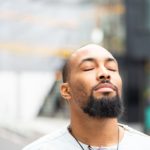
Step Three invites you to look within—into your mind, heart, and soul. What do you discover when you take this inward journey? Jesus offers insight through the following teaching:
- Matthew 16:19 “I will give you the keys to the kingdom of heaven; whatever you bind on earth will be bound in heaven, and whatever you loose on earth will be loosed in heaven.”
step 4: cleanse the cups from the inside out
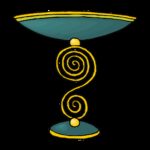
Step Four: Loosening the Binds
Introduction: The Inner Work Begins
Step Four is the “how-to” of loosening the binds that hold us back. Jesus encapsulates this process beautifully in Matthew 23:25-26:
Woe to you, teachers of the law and Pharisees, you hypocrites! You clean the outside of the cup and dish, but inside they are full of greed and self-indulgence. Blind Pharisee! First clean the inside of the cup and dish, and then the outside also will be clean.
These verses remind us that true transformation begins within. Identifying and loosening binds—the mental and emotional entanglements that limit us—has been studied and refined over thousands of years. A bind is both the problem and a symptom of a deeper, hidden trigger. To address them, we must engage in experiential learning rather than intellectual understanding alone.
Like peeling an onion, each layer of a bind reveals another, deeper layer. The journey to inner freedom is gradual and often surprising.
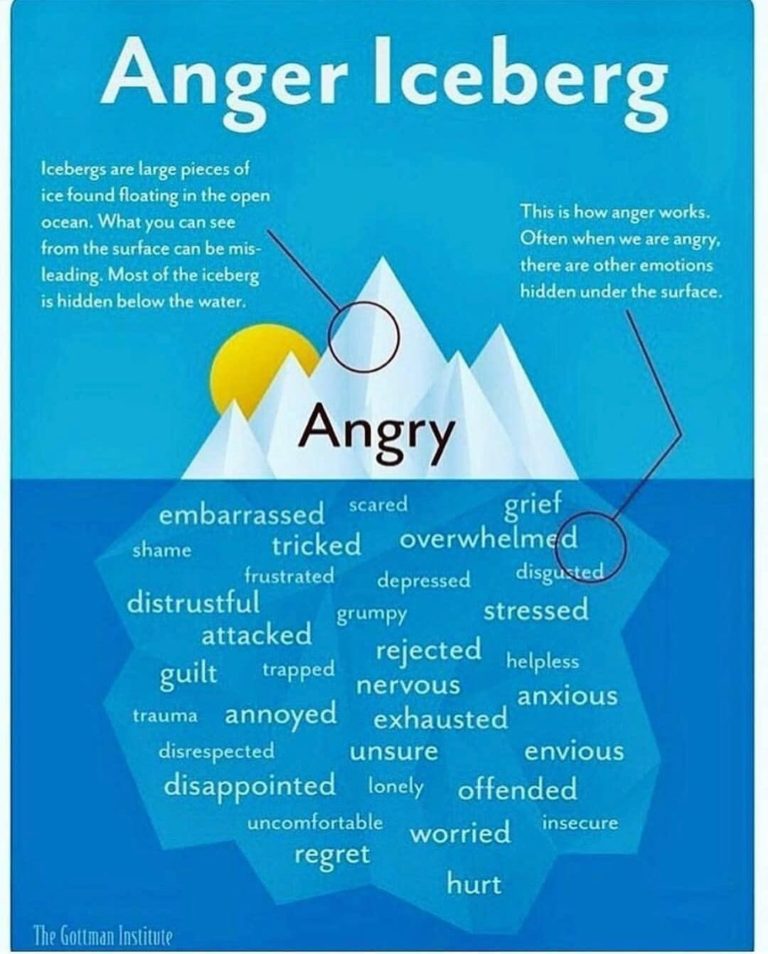
Step Four: How to Loosen the Binds
Jesus teaches the process of loosening binds in the following verses:
Matthew 23:25-26
Woe to you, teachers of the law and Pharisees, you hypocrites! You clean the outside of the cup and dish but inside they are full of greed and self-indulgence. Blind Pharisee! First clean the inside of the cup and dish, and then the outside also will be clean.
Identifying and loosening binds is a vast topic, explored and refined over thousands of years. A bind serves as both a problem and a symptom of deeper triggers. While earlier steps shared concepts from “head to head,” Step Four introduces experiential learning methods to help uncover and release binds.
The Layers of Binds
Binds can be thought of as the layers of an onion. Peeling one layer often reveals deeper, more embedded layers that must also be addressed. Another helpful analogy is the “anger iceberg,” which represents emotions and triggers hidden beneath the surface of conscious awareness. While “anger” might appear at the tip, the subconscious mind below holds memories, habits, beliefs, emotions, and attitudes—the very aspects influencing behaviors and reactions.
In this model, replacing “anger” with your own name personalizes the journey of self-discovery. Subconscious memories, even those repressed or forgotten, can motivate actions and cause symptoms, often without conscious awareness. Accessing these hidden layers is key to loosening binds.
Experiential Learning and Bridging
Talking issues over with a trusted friend can be therapeutic but may not uncover deeper binds or triggers. For that, you need techniques to bypass the analytical mind and access the subconscious directly. One such method is called “bridging,” where one part of your consciousness asks questions of another.
A Teaching Story: Bridging to Loosen a Bind
One night, about 40 years ago, I felt unusual anxiety. Being a calm person, this was perplexing. I closed my eyes and asked myself, “What in my life is making me anxious?” No immediate answer came.
I then asked, “When have I felt this way before?” After a few moments, an image of binoculars appeared in my awareness, startling me. Upon further inquiry, a memory surfaced from my childhood: watching my first horror movie, Horrors of the Black Museum. As an 11-year-old, it had scared me so deeply that I couldn’t sleep in my bed for weeks. The buried memory had resurfaced decades later, and once processed, the associated anxiety dissipated.
This experience illustrates how bridging can uncover and address subconscious binds.
Bridging Questions
To practice bridging, ask yourself questions such as:
“When was the first time I felt this way?”
“What is the most important block I’m experiencing right now?”
“How does this make me feel? When was the first time I felt this way?”
These questions can lead directly to the origins of binds, helping you process and release them. For example, focusing on a physical sensation can serve as a portal to the memory and emotions tied to it. By accessing the memory, the bind can be loosened and its influence diminished.
A Word of Caution
Delving into the subconscious may reveal unexpected or intense memories, especially for those with a history of trauma. Proceed with caution, and instruct yourself to release only what you are ready to handle. Ensure that your journey strengthens you rather than overwhelms you.
Reflection and Preparation
Take a moment to reflect on the ideas presented. These concepts may feel unfamiliar or outside the mainstream, but they hold transformative potential. Consider this perspective: We do not have a soul; we are our soul. As co-creators of our reality, our awareness and personal responsibility empower us. True fulfillment comes not from external validation but from within.
For many, this paradigm shift reduces anxiety about external approval and fosters a deeper sense of calm and well-being. Reflecting on the soul’s eternal nature can also inspire a profound sense of purpose. If you’ve chosen to be here during these times, there is a deeper reason for your presence.
Next Steps
Before moving on to Step Five, take time to process these ideas. Meditate, journal, or discuss them with a trusted friend. When ready, explore the Library of Life link for audio teachings on relaxation, centering, and advanced guided meditations. Trust your inner voice to guide your journey, and proceed when you feel prepared.
step 5: a deeper dive into your cups
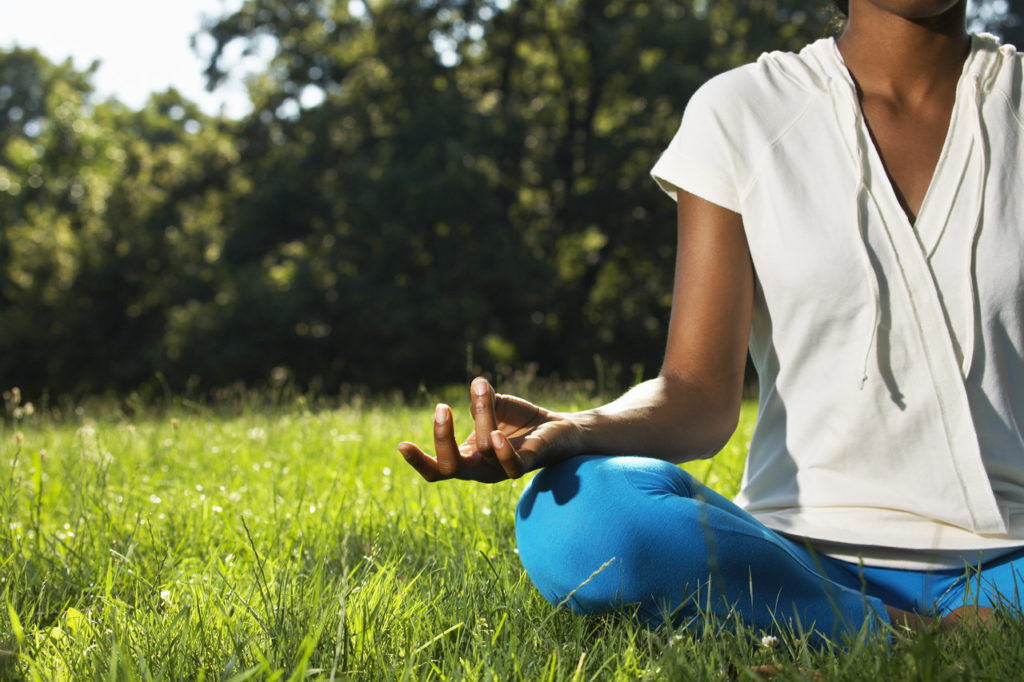
Step Five is a transformative experience with two key elements. For as you cleanse your inner “cups” and release what binds you, you create space within yourself to be filled with Light. In this process, loosening these bonds allows you to discover your Inner Spark or Christ Consciousness.
A Word of Caution
Delving into the subconscious may reveal unexpected or intense memories, especially for those with a history of trauma. Proceed with caution, and instruct yourself to release only what you are ready to handle. Ensure that your journey strengthens you rather than overwhelms you.
Reflection and Preparation
Take a moment to reflect on the ideas presented. These concepts may feel unfamiliar or outside the mainstream, but they hold transformative potential. Consider this perspective: We do not have a soul; we are our soul. As co-creators of our reality, our awareness and personal responsibility empower us. True fulfillment comes not from external validation but from within.
For many, this paradigm shift reduces anxiety about external approval and fosters a deeper sense of calm and well-being. Reflecting on the soul’s eternal nature can also inspire a profound sense of purpose. If you’ve chosen to be here during these times, there is a deeper reason for your presence.
Next Steps
Before moving on to Step Five, take time to process these ideas. Meditate, journal, or discuss them with a trusted friend. When ready, explore the Library of Life link for audio teachings on relaxation, centering, and advanced guided meditations. Trust your inner voice to guide your journey, and proceed when you feel prepared.
Step Five: Filling with Light
A word of caution: much of what lies beneath the surface of your life may be unknown to you. If you have a history of trauma or abuse, approach this step with care—or feel free to skip it. You can go directly to Step Six, learn the lessons there, and still lead a fulfilled life.
1 John 1:5
This is the message we have heard from Him and declare to you: God is light; in Him there is no darkness at all.
1 John 4:16
God is love. Whoever lives in love lives in God, and God in him.
Step Five involves a deep cleansing of the core aspects of your Cup of Safety and Cup of Significance. However, let me emphasize that it isn’t essential to do this guided meditation to manifest your highest good. You can move directly to Step Six, where you’ll learn how to co-create your personal reality.
Through metaphor and symbolism, Step Five guides you in cleansing your inner cups of accumulated sludge and darkness. Imagine the sludge as a thick, sticky layer, like molasses, clinging to the sides of your cups. As you venture deeper within, you may encounter darkness or even an abyss—symbolic of repressed negative energies, toxic emotions, or fears. The darkness represents confronting these negative accumulations, while the abyss signifies releasing core fears.
You may ask, “Why should I do Step Five then?” The primary benefit is that cleansing this sludge and darkness frees space within your cups for positive energies, inner peace, a sense of security, and Divine Light.
Remember the verse from Step Three:
Proverbs 23:7
For as he thinketh in his heart, so is he.
The sludge embodies core beliefs, emotions, and perceptions that shape your life, including:
“The world is an unsafe place, and I do not belong in it.”
“I am not good enough.”
“I am unlovable.”
“People are not to be trusted.”
“I can never do anything right.”
“I am ashamed.”
“I am powerless.”
“It’s always my fault.”
These emotional beliefs can become the overarching truths through which you create and experience your life, effectively making you a prisoner of your past. By releasing these “thoughts of the heart,” you liberate yourself to live fully in the present moment.
step 6: co-creating
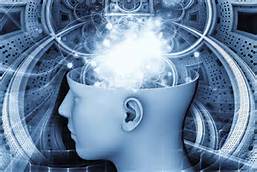
Step Six: The Art of Co-Creation
Step Six is the art of co-creation—learning to fill your inner cups with the boundless power of the Universe. The following scriptures illustrate this process of co-creating your life with God or the Universe:
Mark 11:24
Therefore I tell you, whatever you ask for in prayer, believe you have received it, and it will be yours.Matthew 17:20
If you have faith as small as a mustard seed, you can say to this mountain, ‘Move from here to there,’ and it will move. Nothing will be impossible for you.Luke 17:6
If you have faith as small as a mustard seed, you can say to this mulberry tree, ‘Be uprooted and planted in the sea,’ and it will obey you.These verses highlight the power of focused and intentional co-creation.
Hosea 8:7
For they have sown the wind, and they shall reap the whirlwind.This passage serves as a warning against scattering one’s energy without clear direction.
2 Corinthians 9:6
Whoever sows sparingly will also reap sparingly, and whoever sows generously will also reap generously.Galatians 6:7
Do not be deceived: God cannot be mocked. A man reaps what he sows.The message is clear: what you sow, you reap. This universal principle applies both in agriculture and in life. The scriptures teach us that our beliefs, faith, and intentions co-create our reality. Faith is the seed, and with it, your intention (the mustard seed), beliefs, and heart-centered emotions form the tapestry of your life.
These verses encourage us to think big and be bold—moving mountains and mulberry trees. Yet, they do not specify how these things will unfold or how long it might take. Trust in the process.
Suggested Outline for Co-Creation (Customize to Fit Your Style)
- Center Yourself: Return to your Sacred Circle.
- Say a Prayer: “Turn first to the Kingdom of Heaven” to fill your cups.
- State Your Intention: Clarify your intention (left-brain focus).
- Visualize the Outcome: Shift to the right-brain and imagine your ideal outcome. Visualize it vividly as part of your life. How does it feel? Allow yourself to become that change.
- Energize with Love: Move the image from your mind to your heart. Energize it with the Power of White Light Love. Create a ball of White Light Energy in your hands, feeling its power.
- Place Your Intention in the Light: Enclose your intention and visualization within the ball of White Light/Love Energy.
- Release to the Universe: Let go, releasing the ball of White Light to the Universe.
- Trust the Process: Allow the Universe to manifest your vision.
- Example Affirmations for Your Intentions
step 7: daily life is a Spiritual exercise
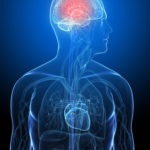
- Step Seven is about embodying the principles of a centered and spiritually grounded life, transforming daily living into a profound spiritual exercise.
As these concepts take root within you, you’ll notice a shift: instead of reacting impulsively to circumstances, you begin responding with grace and wisdom. This shift cultivates a life of profound inner strength, resilience, and well-being.
The result? A deep, abiding peace that becomes the bedrock of true security and confidence. Challenges may still arise, but you’ll find yourself less likely to surrender your power to them, standing firm in the strength of your spiritual foundation.
The Apostle Paul captured this beautifully:
- Philippians 4:7 “And the peace of God, which transcends all understanding, will guard your hearts and your minds in Christ Jesus.”
Similarly, Psalm 23 offers a poetic reflection of this actualized spiritual life:
- The Lord is my shepherd; I shall not want.
He maketh me to lie down in green pastures: he leadeth me beside the still waters.
He restoreth my soul: he leadeth me in the paths of righteousness for his name’s sake.
Yea, though I walk through the valley of the shadow of death, I will fear no evil: for thou art with me; thy rod and thy staff they comfort me.
Thou preparest a table before me in the presence of mine enemies: thou anointest my head with oil; my cup runneth over.
Surely goodness and mercy shall follow me all the days of my life: and I will dwell in the house of the Lord - forever.
Notice the rich metaphor of the overflowing cup—symbolizing a life filled with blessings, gratitude, and inner fulfillment.
This transformation is also reflected in the Fruits of the Spirit:
- Galatians 5:22-23
“But the fruit of the Spirit is love, joy, peace, forbearance, kindness, goodness, faithfulness, gentleness, and self-control. Against such things, there is no law.”
Take a moment to reflect: Can you see these fruits blossoming in the garden of your soul? Can you feel the deep peace that transcends human understanding?
If not, take heart. Growth is a journey, and there are tools available to support you along the way. I’ve created a powerful guided meditation designed to help you cultivate inner peace and spiritual fulfillment. Visit the audio section of this site to explore it and allow it to guide you deeper into this transformative experience.
Embrace Step Seven, and let each day become a sacred step toward the life you are destined to live.
Here are additional affirmations to support your intentions:
- I am open to receiving all the blessings the Universe has in store for me.
- My thoughts and intentions create my reality, and I align them with love and light.
- I trust the process and know that all things are unfolding in perfect timing.
- I am deserving of all the abundance and opportunities that come my way.
- I am the co-creator of my life, and I manifest my dreams with faith and clarity.
- I release all doubts and trust that the Universe is guiding me to my highest good.
- I am a vessel of light, and I radiate love, peace, and healing energy.
- Every step I take is in alignment with my soul’s purpose.
- I am grateful for the abundance of love, wealth, and happiness in my life.
- My heart is open to receiving the infinite possibilities of the Universe.
- I trust in the divine timing of my desires and let go of any need to control the outcome.
- I am aligned with the energy of abundance, and it flows to me effortlessly.
- I release any fear or limitation and embrace my limitless potential.
- I am worthy of all the good that life has to offer, and I accept it with gratitude.
- My intentions are powerful, and I trust that the Universe is responding to them now.
